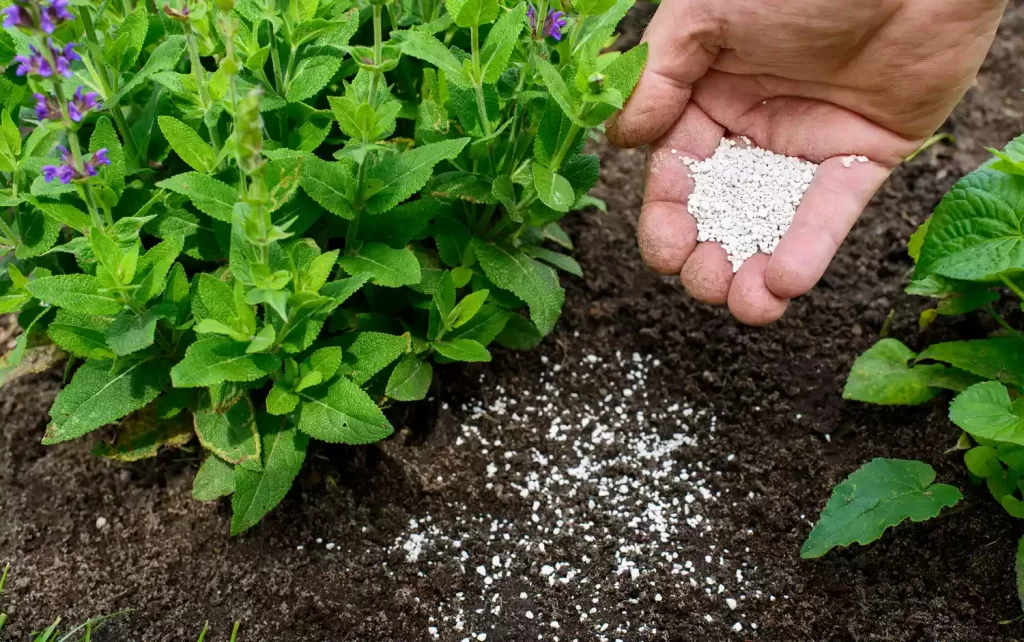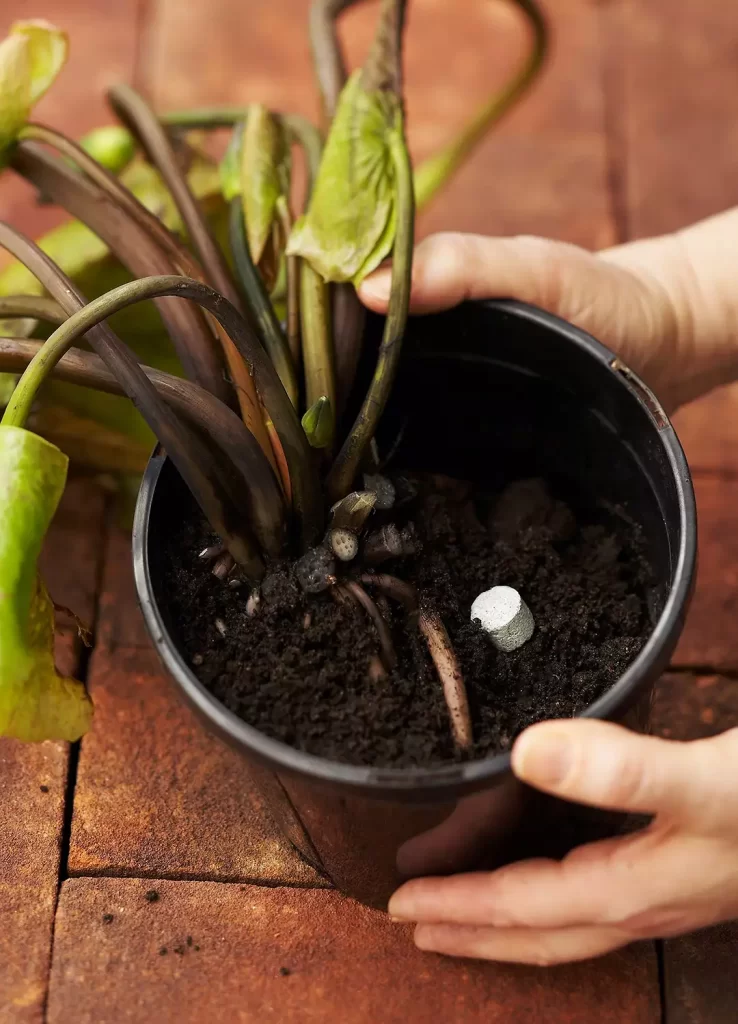A regular dose of important nutrients goes a long way toward better growth. Get expert tips on fertilizing plants for the best results.
When it comes to figuring out what to feed your plants, it can get overwhelming fast. Once you factor in the different types of fertilizers, the quality of your soil, and what exactly your individual plants need, sometimes it feels easier to just skip the whole process. But if you’re not fertilizing your plants, they likely won’t grow as well or bloom as much as you want. Besides sunlight and water, all plants require certain nutrients to thrive, and if you don’t occasionally replenish their supply, they can end up having health issues. Here’s what you need to know about fertilizing plants to keep your greenery thriving.

Why Do Plants Need Fertilizer
Much like people do, plants need a set of essential nutrients to grow properly and stay healthy. All plants must have nitrogen, phosphorous, and potassium in particular, known as macronutrients because plants need these the most (there’s also several micronutrients that are needed in such small quantities, you usually don’t have to worry about them). Without enough of these macronutrients, you’ll eventually end up with very sad plants that have weak stems, smaller leaves, fewer flowers, and poor color. The good news is that you can correct most nutrient deficiencies by adding some fertilizer. The best ways to fertilize plants depend on if they are growing in your garden or in containers.
Fertilizing Plants In Your Garden
It might seem like your plants can just get all the nutrients they need from your garden soil, but that’s not always the case. Factors such as the region you’re in and what has been growing in your soil impacts its nutrient levels. And for newer properties that have had fill dirt added after construction, your yard might actually start out with very poor soil that’s low in organic matter, which is the main natural source of plant nutrients. Even if you’ve got rich soil, over time your plants can use up all the available nutrients.
But wait! Before you begin throwing fertilizer around, you need to figure out your yard’s current nutrient situation. The best starting point to fertilizing plants is to test your soil so you know what you’re working with, and what you need to add for healthy plants. Otherwise, you could end up wasting money on fertilizer you don’t need, or overdoing it and damaging your plants. The results of your soil test will usually tell you exactly how much fertilizer with a particular nutrient you need to provide. And because plants will use up different amounts each year, it’s a good idea to do a soil test annually.
Adding compost, mulch, and other organic matter to your soil helps make it richer, but may not provide nutrients fast enough for everything you’re growing. That’s because organic matter has to break down a little over time before plants can use the nutrients in them. You can supplement these slowly released nutrients with more immediately available ones that fertilizers provide. Use either a liquid or granular product with a balanced amount of the big three nutrients. Look for a number on the label like 10-10-10 (representing the nitrogen-phosphorus-potassium proportions in the fertilizer, often abbreviated to N-P-K), which will suit most plants.

Fertilizing Houseplants and Container Gardens
Fertilizer is especially important for houseplants and other containerized plants because they’re limited to the soil in their pots, and once those nutrients are gone, your plants’ roots can’t stretch out to find more. This is one reason why it’s important to start with a quality potting soil, which often will already have some slow-release fertilizer mixed in to support your plants’ initial growth. Once that gets used up, it’ll be important for you to add more or to repot with fresh mix.
If you’re not sure how much fertilizer to give your potted plants, it’s always better to under-fertilize than go overboard. Adding too much can make it harder for roots to soak up water. Plus, an overdose can cause leaves to turn brown or yellow, the very opposite of what you’re trying to achieve. If you use a liquid fertilizer that’s meant to be mixed with water first, a handy trick is to dilute it to about half the strength the label recommends. That way, you’ll reduce the risk of over-fertilizing but your plants will still likely get enough of what they need (remember, a little goes a long way).
How Often to Fertilize Plants
You might take daily vitamins, but plants don’t need to be fertilized as frequently. Exactly how often you need to fertilize plants depends on the types of plants you are growing and the time of year. Some garden plants are heavy feeders (meaning they need more nutrients than others). These tend to be species that grow fast and bloom a lot, including most annuals, fruits, veggies, roses, and hydrangeas. These plants appreciate being fed about once a month during the growing season with a general purpose, liquid fertilizer. Others, including some perennials (such as bee balm and coneflower), trees, and shrubs, don’t need much fertilizer at all, especially if you add plenty of compost or other organic material to your soil before planting. You may want to feed them once in the spring as they start ramping up their growth.
Many leafy and flowering houseplants also follow a seasonal schedule, slowing down during the cooler months and not needing as many nutrients then. When they’re more actively growing in the spring and summer, they benefit from a little liquid fertilizer along with their water about once a month. If you’re not one to remember to do that, go for slow release granules or a nutrient tab you can just push into the soil every few months or so. For your indoor cacti and succulents, which generally don’t need much fertilizer at all, just one or two doses of liquid fertilizer per year will suffice.


